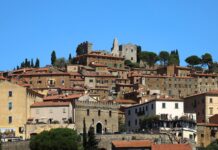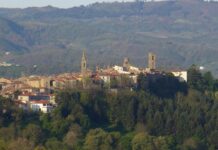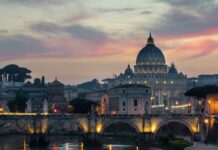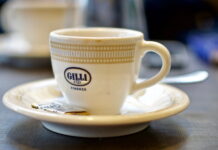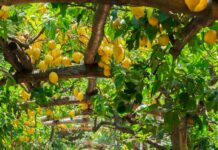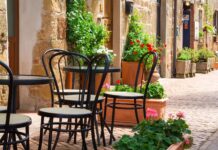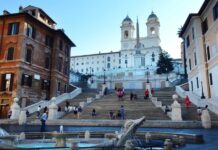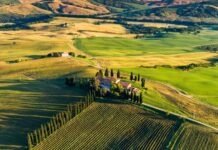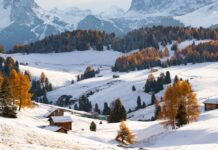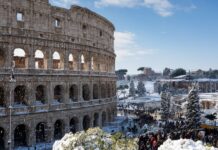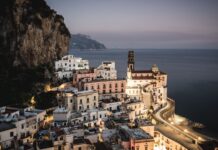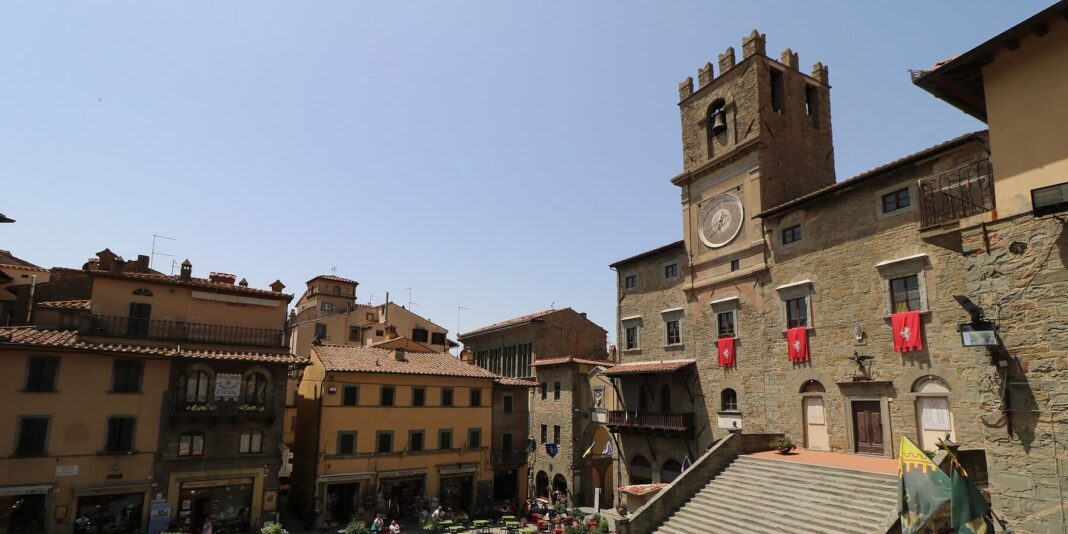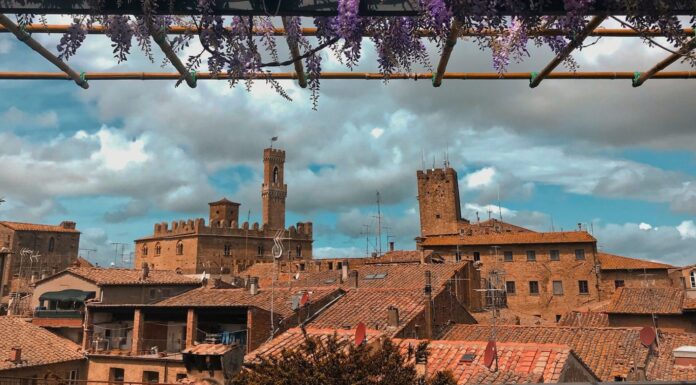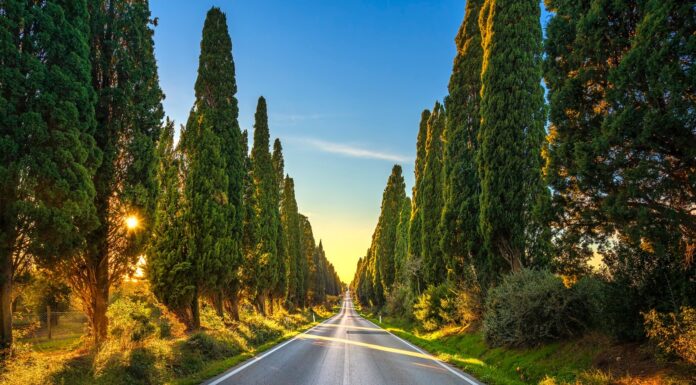More than 20,000 people make up Cortona, a hilltop town with medieval roots and rich history. It’s particularly famous for its appearance in the movie “Under the Tuscan Sun”.
If you’re in Italy, Cortona is absolutely worth the visit. Besides the fact that it was the setting of a well-known romantic comedy film, this town offers extraordinary views and attractions. From the impressive architecture and narrow streets to the incredible artwork in towering churches, Cortona truly has something for everyone.
Where is Cortona, Italy?
Cortona is located in the Val di Chiana, a valley that runs through the Tuscany and Umbria regions of Italy. After the city of Arezzo, Cortona is the main cultural center of the valley.
It’s located in eastern Tuscany, just 30 km southeast of Arezzo. Cortona is also relatively close to Siena, which sits 75 km to the west. The closest large city, Florence, is 122 km northwest of Cortona.
The 10 Best Places to Visit in Cortona, Italy
1. Piazza Signorelli

Piazza Signorelli, the fulcrum of the city, is small but essential to Cortona’s character. The square is surrounded by historic buildings and is the meeting point of several wandering stone streets.
The fourth Sunday of every month, an antiques market takes place in Piazza Signorelli and its neighboring streets. In addition to antiques, vendors sell collectibles and modern pieces.
The name of the piazza comes from Luca Signorelli, a Renaissance painter who was born in and died in Cortona.
2. MAEC – Museum of Etruscan Civilization
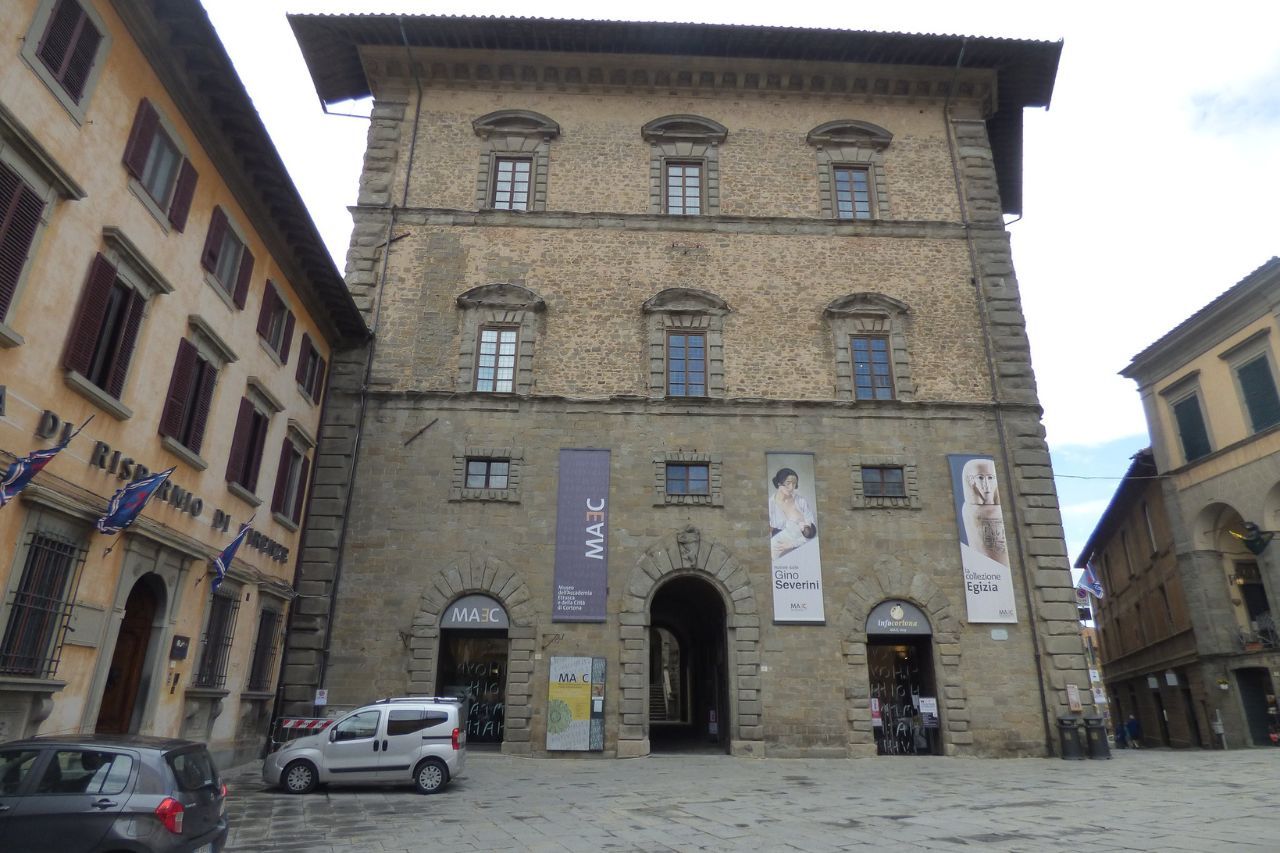
The Museum of Estruscan Civilization is located in Piazza Signorelli, in between Palazzo Casali and Palazzo Comunale.
It dates back to 1727, when the abbot Onofrio Baldelli donated his personal museum to the institution. Many archeological additions to Baldelli’s collection were made during the 18th century.
Some of the most iconic works in the museum are the Etruscan chandelier, the Tabula Cortonensis, the Ginori Temple, and the statues of Selvans and Culsans.
You can either take a self-guided tour with an audio guide, or you can sign up for a guided tour. The opening time varies depending on the time of year, so keep that in mind when planning your visit.
Read more: Etruscan Cities in Tuscany – Ancient Roads to Temples & Tombs
3. Chiesa di Santa Maria delle Grazie del Calcinaio
The church of Santa Maria delle Grazie del Calcinaio is a Catholic house of worship located in Calcinaio in Cortona.
The unique structure includes a dome and a nave flanked by two chapels. The exterior has eroded with time, but still demonstrates the geometric design to visitors. Horizontal and vertical lines run across the surface, which features plenty of windows and gables.
The interior includes altars, paintings inspired by Marian iconography and an exquisite stained glass window.
In 1484, the church’s painting of Madonna and Child supposedly started to work miracles. Currently, it sits in the high altar visible to visitors.
Read more: Cathedrals in Italy – Exploring Italy’s Historic Treasures
4. Girifalco Fortress
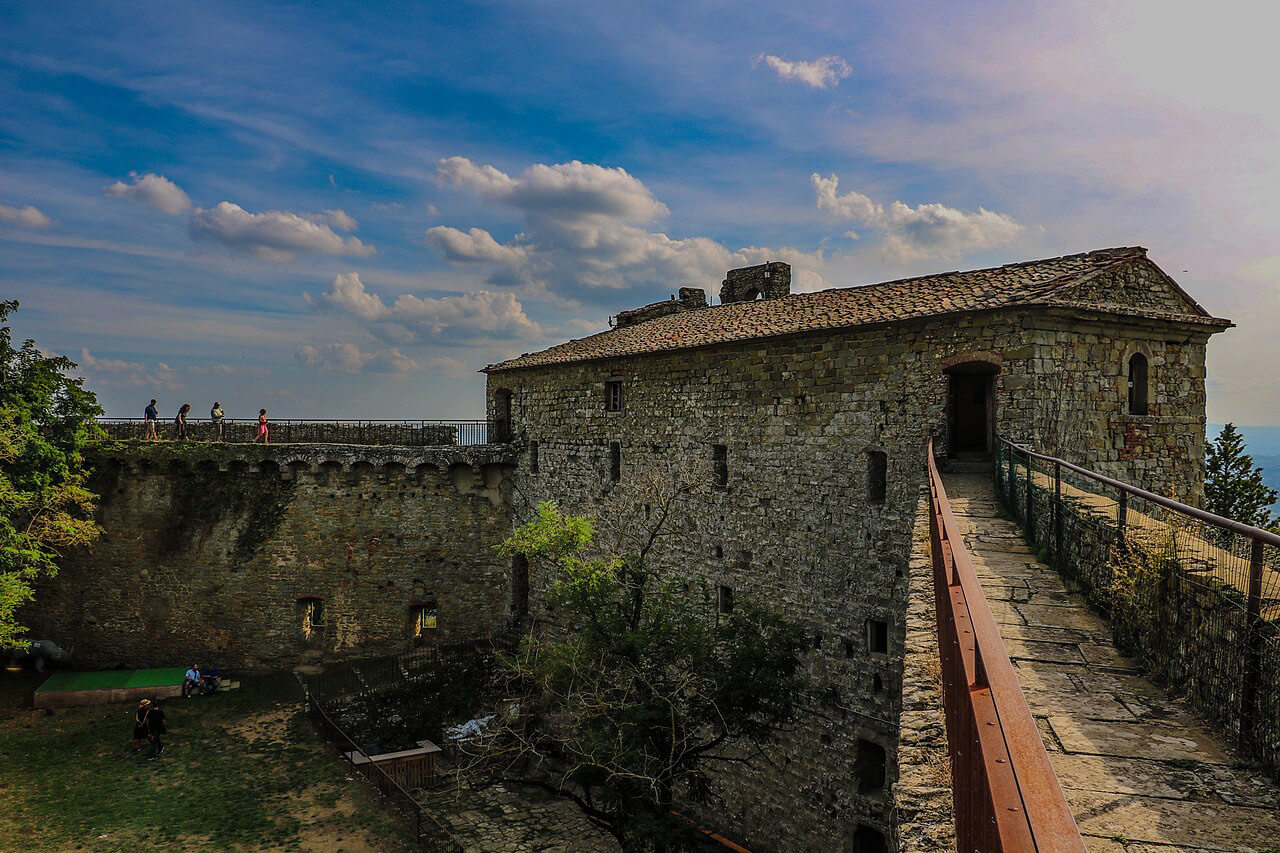
This historical fortress was built in approximately the 5th or 6th century BC. However, records first officially mentioned it in 1258 AD. During wars with the neighboring Arezzo, Girifalco was plundered multiple times.
Throughout the 16th century, it was gradually renovated with a new construction technique to better protect against new artillery. Interestingly, this newly-designed version never actually saw a battle. In the 18th century, it was used as a town prison.
The Girifalco Fortress was restored again in the 1950s and 1960s to accommodate visitors. In the shape of a trapezoid, it features a unique bastion in each corner.
Inside the walls, there is a courtyard, a garden, and the Captain’s Palace.
Read more: 15 Castles in Tuscany – An Enchanting World of Timeless Beauty
5. Franciscan Hermitage “Le Celle”
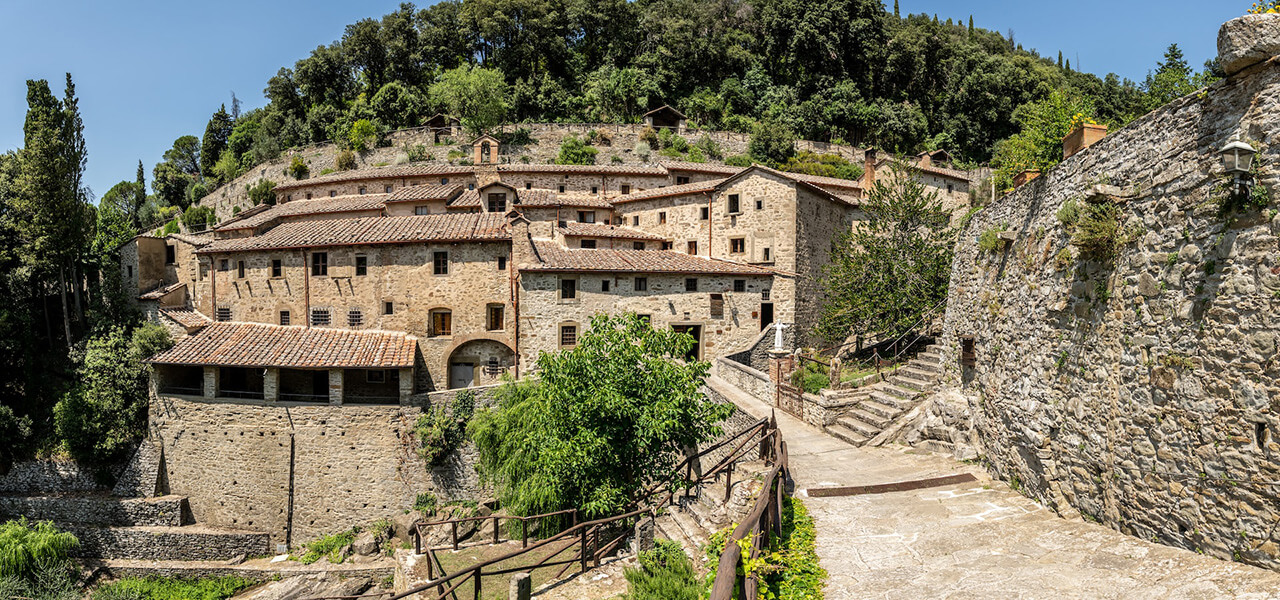
This 13th-century convent is just 4 km away from Cortona. It was the first convent founded by San Francesco.
The site was designed with a terraced structure and to receive as much sunlight as possible. The buildings were constructed with stones from the mountain and the river.
Make sure to check out the cell of San Francesco, the typical Franciscan church, the ancient oratory, the Chapel of the Trinity, and the bridges.
Immersed in nature, it features a fresh stream, evergreen plants, and oak trees. The convent was not completely silent. Rather, it was surrounded by only natural sounds.
To get there, you can either hike or drive via Strada Provinciale 34 Umbro Cortonese.
6. Diocesan Museum

The Diocesan Museum houses interesting art spanning thousands of years. The collection was founded in 1945 and showcases diverse works.
Showcased artists include Luca Signorelli, Fra Angelico, Pietro Lorenzetti, Sassetta, and Bartolomeo della Gatta.There is one room that is entirely dedicated to Signorelli. It highlights his workshop, his bond to his hometown, and his later years of work.
Important pieces include the Communion of the Apostles by Signorelli, Lamentation of Christ by Giorgio Vasari, and the triptych of the Madonna of Humility with Saints by Sassetta.
The museum’s oldest work is an ancient marble sarcophagus from ancient Rome. Dating back to the 2nd century AD, it portrays the battle of the god Dionysus and the Amazons.
7. Piazza della Repubblica
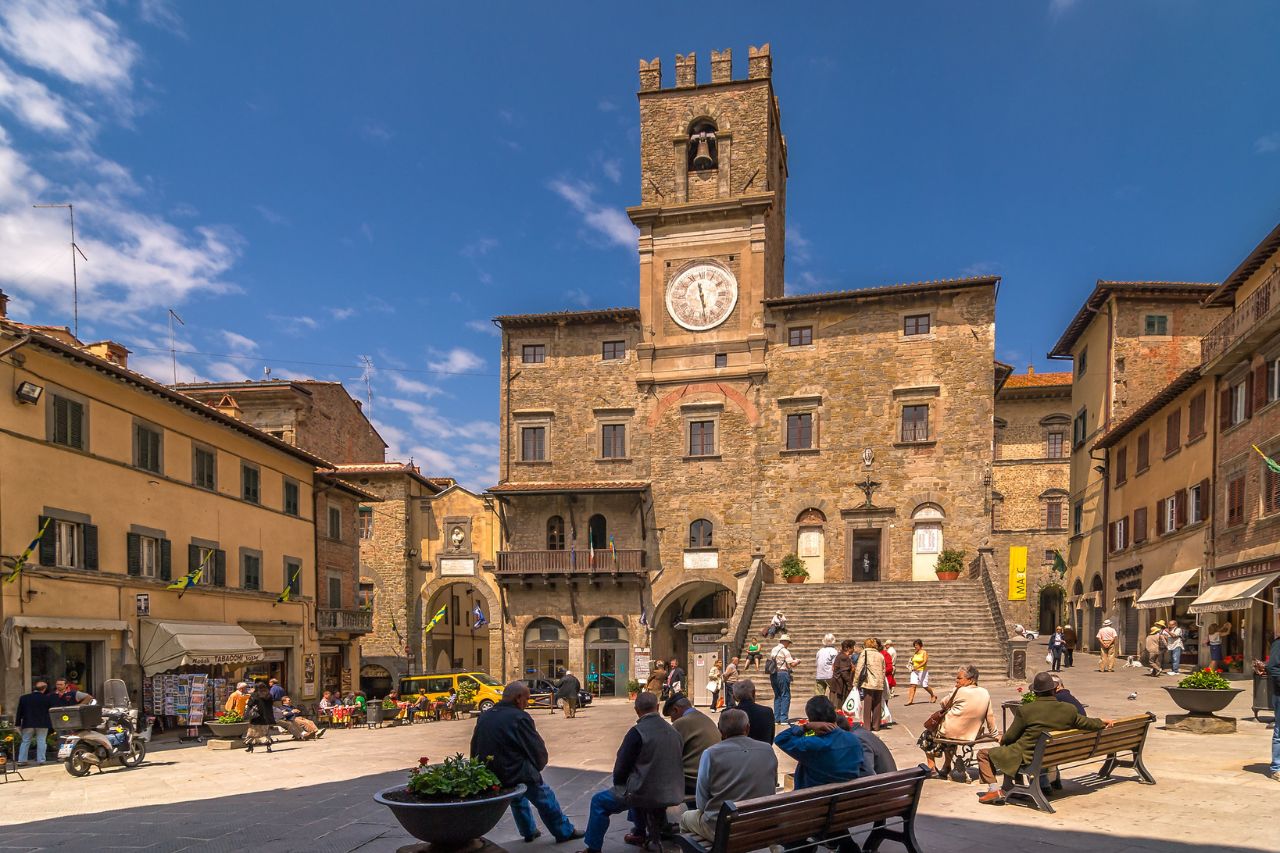
The Piazza della Repubblica constitutes a part of Cortona’s urban layout. It’s located in the city’s historic center, near Piazza Signorelli.
In ancient times, Roman roads intersected at the plaza. A forum, a site of commercial activities and public buildings, also stood here once.
Today, the square is home to the incredible Palazzo del Capitano del Popolo and the Palazzo Comunale. There are plenty of other stone buildings that have less historical importance, but still contribute to the plaza’s charm.
Like in ancient Roman times, many important streets intersect here. Via Nazionale is one of the few streets in the city that’s fairly flat and not strenuous. Another street, Via Ghibellina, is particularly magnificent. Elegant arches adorn this narrow street that comes right up to the piazza.
Piazza della Repubblica is the perfect place to relax, admire historic buildings, and people-watch.
8. The Tanella of Pythagoras
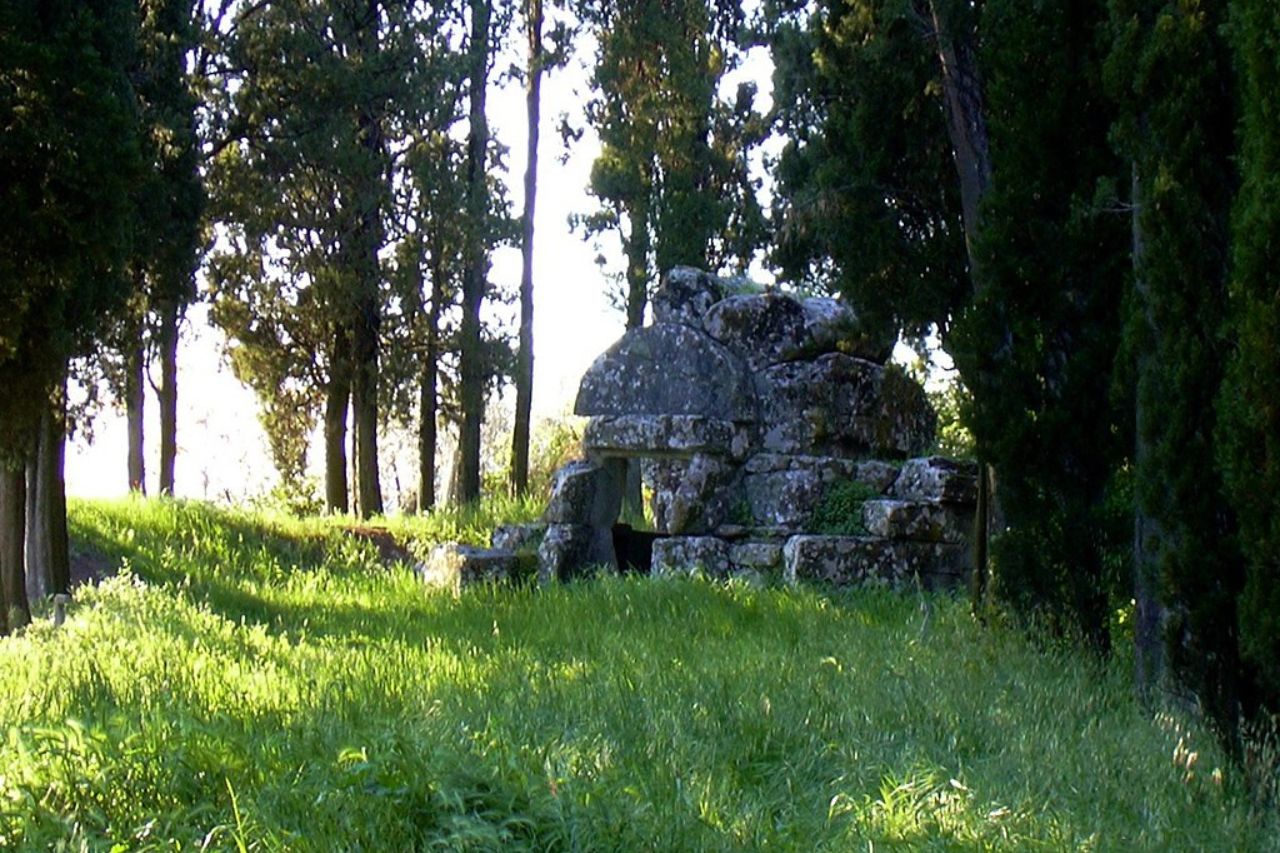
The Tanella of Pythagoras (or Pitagora in Italian) is an Etruscan tomb dating back to ancient times.
This peculiar tanella features a half-circle carved in stone, which is now uncovered but was buried like other Etruscan tombs in the past. Moss covers the stony exterior, and green grass surrounds the entire structure.
However, many visitors have reported that they could only see the structure through the gate, about 20 meters away.
9. Sodo Archaeological Park

The area around Cortona is peppered with archaeological sites that offer insight into Etruscan life and culture. The Parco Archeologico del Sodo showcases multiple tombs and even an Etruscan sacrificial altar.
Several of the contents of the tombs now rest in the previously mentioned Museum of Etruscan Civilization. However, the original sites remain at the Sodo Archaeological Park.
It is recommended to visit the park with a tour guide or a book to learn about its deep history. Or, you can book a tour through MAEC.
10. The locations of “Under the Tuscan Sun”
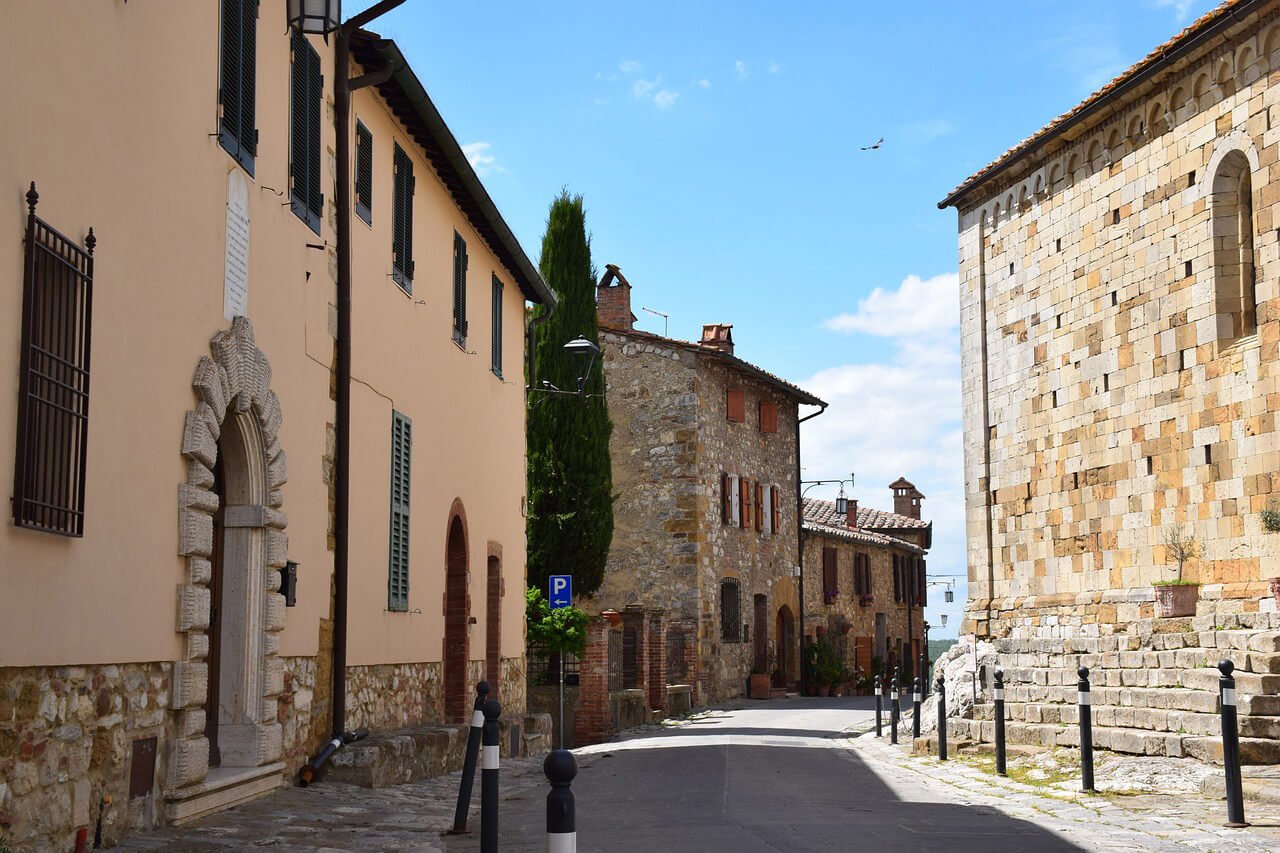
Last but certainly not least on this list are the locations of the movie “Under the Tuscan Sun”, which was set in Cortona.
The popular film is about an American writer grappling with divorce who takes a trip to Tuscany to get away for a while. There, she buys an Italian villa out of the blue in hopes that it will change her life.
If you’re a fan of the movie, you can visit the filming locations in Cortona. If you head inside Banca CR Firenze, you’ll recognize the setting of the bank scene. Visit the Cassa di Risparmio di Firenze, the backdrop of the real estate transaction scene in which the protagonist purchases the villa. Go inside Teatro Signorelli, where the protagonist has her movie date.
By visiting these filming locations, you’ll be able to feel like you were in the movie yourself.
Explore more: Poppi – A Spectacular Castle Town in Tuscany
Best Places to Stay
There is plenty of variety among accommodations in Cortona. Here are some lovely options for all kinds of visitors:
Monastero di Cortona Hotel & Spa
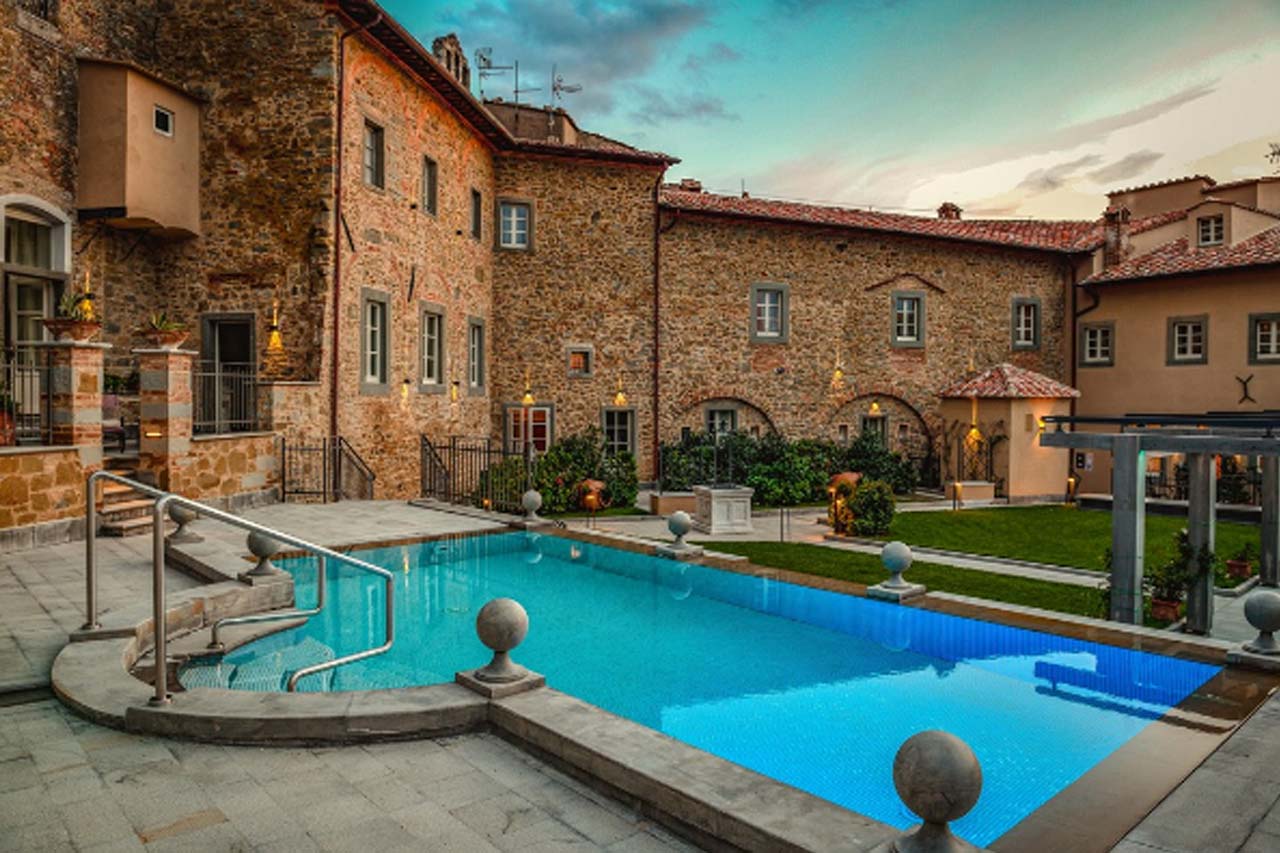
Located in a monastery, this upscale hotel offers beautiful decor, a rooftop garden, and opportunities for spa treatments.
B&B San Francesco
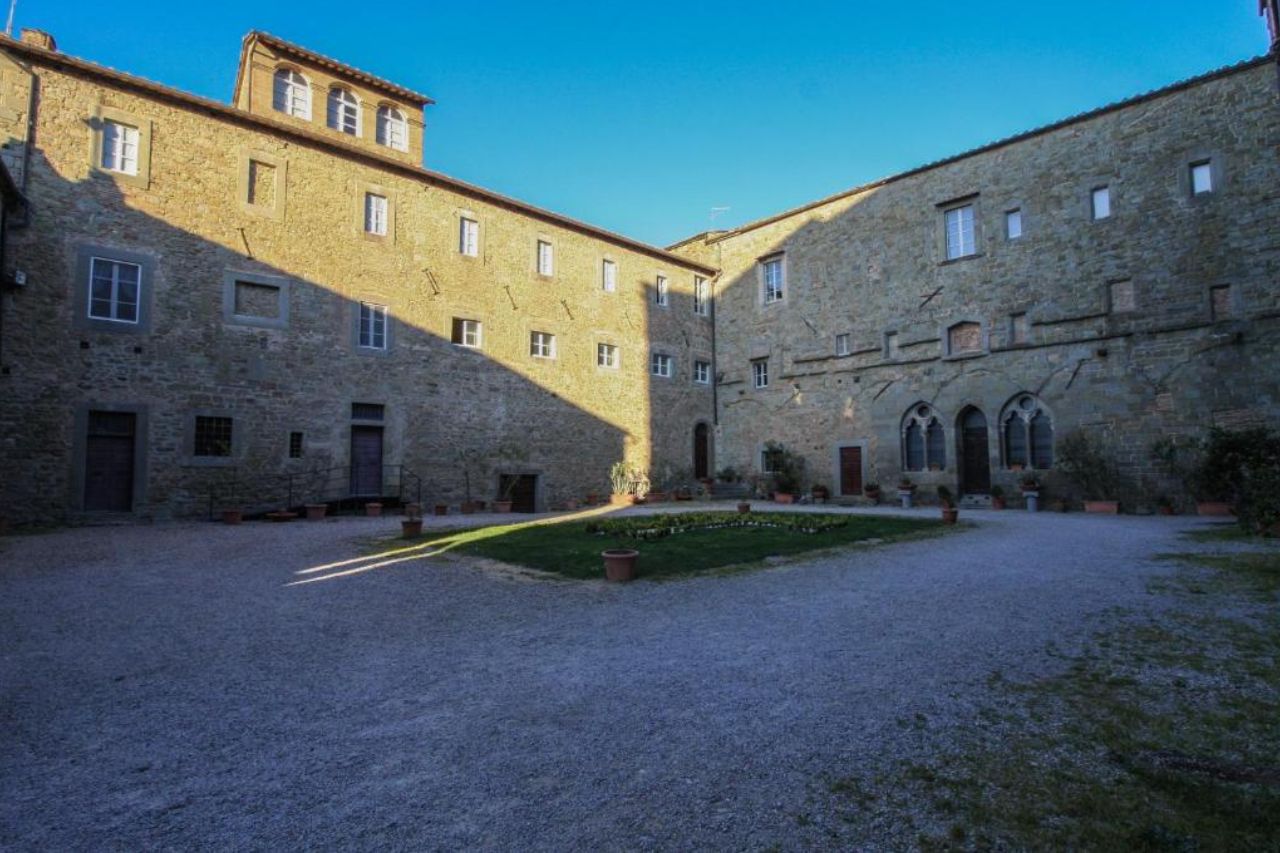
This cozy B&B features breakfast and a quaint garden in the city center.
Agriturismo Frantoio Valiani
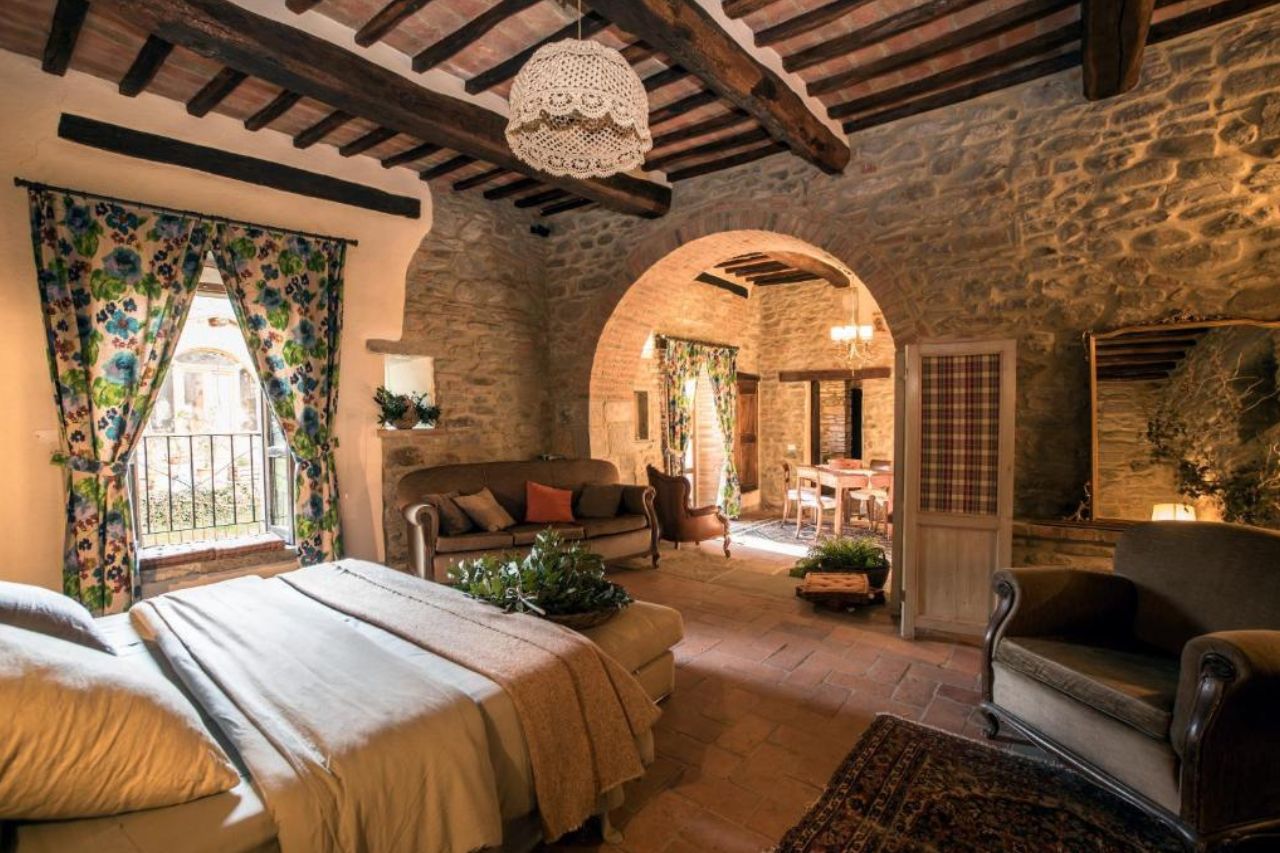
Just 1.2 km from the center, this agritourism boasts unique character, lush greenery, and activities such as horse riding.
How to Get to Cortona
Luckily, Cortona is easily accessible by several modes of transportation.
The closest airport is in Perugia, which has direct flights from Brussels and London. However, if you’re coming to Italy from somewhere else (like the United States), you’ll want to fly into Aeroporto di Firenze-Peretola.
If you’re coming from Perugia, the drive to Cortona is a quick 45-minute journey through the hillsides. Alternatively, take the high speed Frecciarossa train and a bus to get there in 1-1.5 hours.
Leaving from Florence, you can drive to Cortona in an hour and a half via A1/E35. Or, you could take a combination of a train and a bus to get there in around 2 hours.
You can even get to Cortona from Rome in just 2.5 hours by driving or by public transport.
There are also a number of private and small-group tours from Rome and Florence. Since transportation is included in these tours, you won’t have to worry about figuring it out yourself.
No matter what, you’ll pass through unreal landscapes filled with lush hills and prosperous vineyards as you get to Cortona.
Read more: Day Trips from Florence — 15 Unforgettable Tours
What to See Near Cortona
Since Cortona is situated in the Tuscan hills, there are plenty of things to do in the area if you have the time. Some of the best destinations include:
- Vineyards and Wineries
- Anghiari
- Montepulciano
- Arezzo
Vineyards and Wineries
Tuscany, easily recognized by its rolling green landscapes, is home to great wine. Cortona is surrounded by wineries and their vast vineyards. If you have the chance, participate in a wine tasting or go on a wine tour.
The Chianti Hills are particularly impressive to wine lovers. Famous for its wine production, the Chianti area is home to a plethora of beautiful wineries and produces DOCG red wine.
If you have a full day to explore, you can take the Chiantigiana. This road connects Siena to Florence and meanders through acres and acres of world-famous vineyards.
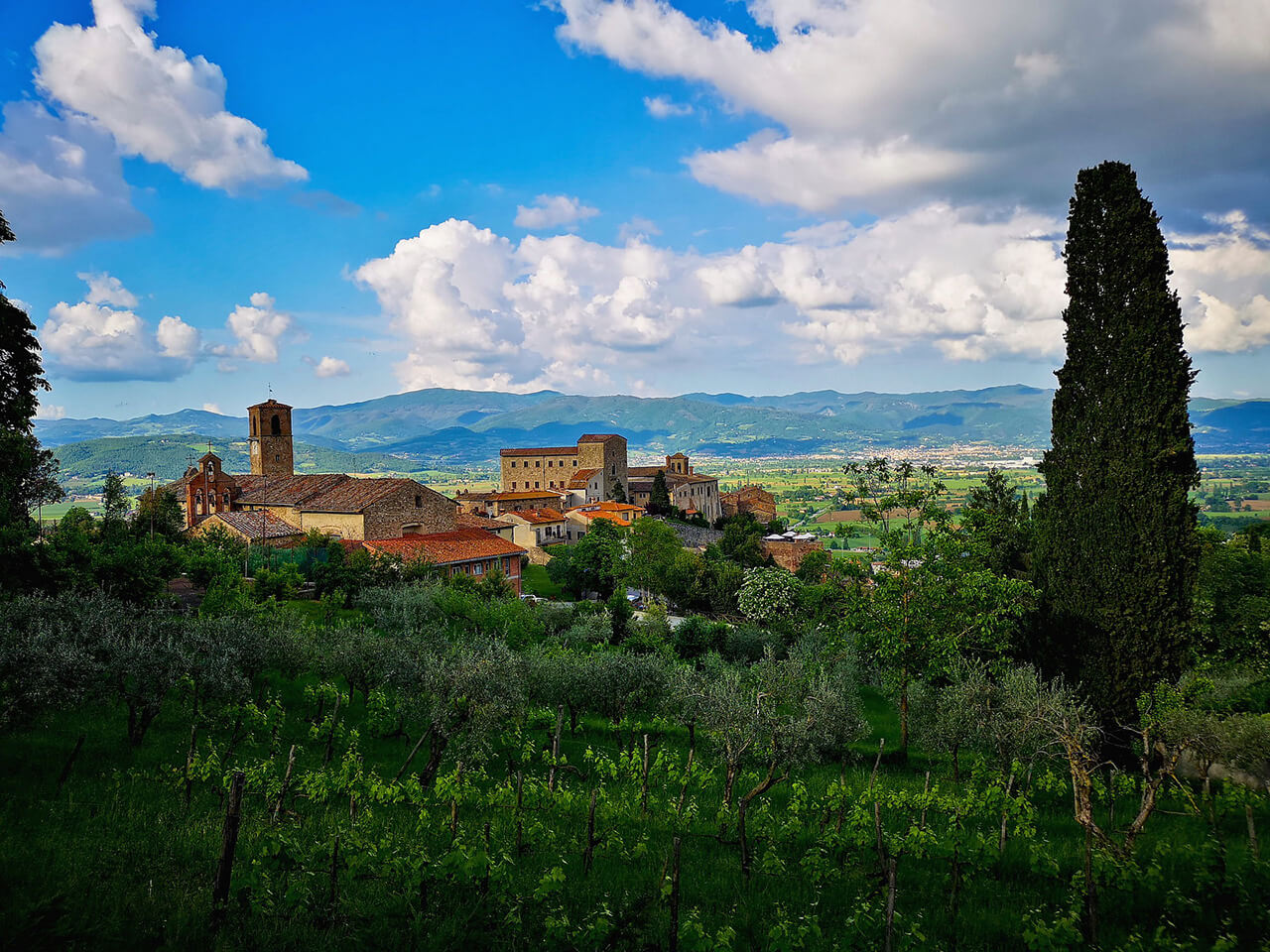
Anghiari
Just an hour drive away from Cortona is the medieval hilltop town of Anghiari. This delightful small village is a fantastic getaway for anyone looking to get an authentic Tuscan experience and learn about history.
Some of the must-see attractions in Anghiari are Chiesa di Santo Stefano, Palazzo Taglieschi, Castello di Montauto, and Museo della Battaglia di Anghiari.
Anghiari is just under an hour’s drive away from Cortona.
Montepulciano
Montepulciano is another nearby medieval town on a hill that deserves attention. It’s bigger than Anghiari if you prefer to take a day trip to a town with more people.
Make sure to check out Tempio di San Biagio, Il Corso, and Palazzo Comunale. If you’re a fan of the Twilight saga, you must visit Piazza Grande, an important filming location of the series’ second movie.
The town is just a 45-minute drive southwest of Cortona.
Arezzo
If you’re looking for a nearby city with more opportunities to learn about art and history, Arezzo is a fantastic option.
The Roman historian Livy described the city as one of the Etruscan capitals, and it had historical importance for thousands of years afterwards. It functioned as an episcopal seat during the Middle Ages, saw the creation of Renaissance masterpieces, and was attacked during WW2.
It was home to poets and artists including Guido of Arezzo, Giorgio Vasari, and Guittone d’Arezzo. Famous artwork in the city includes the Basilica di San Domenico’s crucifix and Piero della Francesca’s frescoes inside the Basilica di San Francesco.
To check out the artwork and history in Arezzo, you’ll need to drive 30 to 40 minutes south of Cortona.
Featured image credits: Diego Baglieri, CC BY-SA 4.0, via Wikimedia Commons


